Today’s Current Affairs: 8th Jun 2023 for UPSC IAS exams, State PSC exams, SSC CGL, State SSC, RRB, Railways, Banking Exam & IBPS, etc
Table of Contents
Varunastra: Heavy-Weight Torpedo
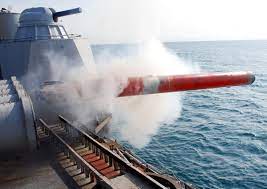
Indigenously designed and developed heavy-weight torpedo (HWT) Varunastra was recently successfully test-fired with a live warhead against an undersea target by the Indian Navy.
- Varunastra is ship launched, heavy weight, electrically-propelled anti-submarine torpedo capable of targeting quiet submarines, both in deep and shallow waters in an intense counter-measures environment.
- It was designed and developed by Vizag-based Naval Science and Technological Laboratory (NSTL) under the Defence Research and Development Organisation (DRDO) and is manufactured by Bharat Dynamics Ltd (BDL).
- Varunastra can be fired from all Anti-submarine warfare (ASW) ships capable of firing heavy weight torpedoes.
- It has a length of 7.78 meters (25.5 feet) and a diameter of 533.4 mm (21.00 in).
- It is capable of being launched from surface ships and submarines.
- It can achieve speeds in excess of 40 knots (74 km/h; 46 mph) and has a range of 40 km (25 mi).
- Weighing around 1.5 tonnes, it can carry a 250 kg (550 lb) high-explosive warhead and has a maximum operating depth of 600 metres (2,000 ft).
- It has long range with multi manoeuvring capabilities.
- The torpedo’s guidance system uses active-passive acoustic homing, wire guidance, and GPS/NavIC satellite guidance.
- It has conformal array transducers that allow it to look at wider angles than most common torpedoes.
- It also has an advanced autonomous guidance algorithm with low drift navigational aids, an insensitive warhead that can operate in various combat scenarios, and a GPS-based locating aid.
Fattah Missile : Iran First-Ever Hypersonic Missile
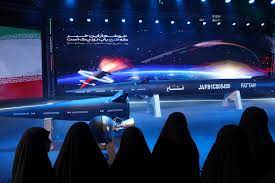
Iran has recently unveiled its first-ever hypersonic missile, Fattah, which it says can penetrate missile defence systems and will give it a military edge
- Fattah Missile is an intermediate range ballistic missile developed by Iran.
- It can travel at hypersonic speeds of up to 15 times the speed of sound and can penetrate missile defence system.
- It has a range of 1,400 kilometres and uses solid propellants, allowing high manoeuvrability.
- This missile has the capability to utilize various warheads for different missions.
- Hypersonic missiles travel at speeds of at least Mach 5 — five times the speed of sound — and can manoeuvre mid-flight, making them harder to track and intercept.
- Unlike conventional ballistic missiles, hypersonic ones fly on a trajectory low in the atmosphere, enabling them to reach their targets more quickly and with less chance of being intercepted by modern air defences.
UNESCO’s Michel Batisse Award For 2023:
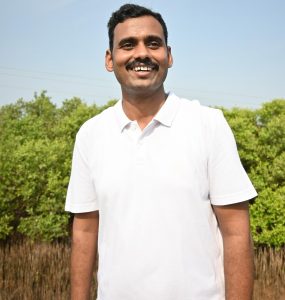
The Director of the Gulf of Mannar Marine National Park recently bagged UNESCO’s Michel Batisse Award for 2023.
- Designated as a Biosphere Reserve, the Gulf of Mannar is one of the biologically richest coastal regions in all of mainland of India.
- It is the first Marine Biosphere Reserve in the South and South East Asia.
- It is located 160 km between Dhanushkodi and Thoothukudi in Tamil Nadu.
- This Marine Biosphere Reserve encompasses a chain of 21 islands (2 islands already submerged) and adjoining coral reefs off the coasts.
- Gulf of Mannar Marine National Park, established in 1980, boasts three surreal aquatic ecosystems – mangroves, seagrass, and coral reef.
- The intertidal areas are dominated by mangroves belonging to the Rhizophora, Avicennia, Bruguiera genus.
- Seagrass is another prolific species, about 12 species exist here.
- About 150 species of seaweeds to are found in the waters. There is one endemic plant, a flowering herb called Pemphis acidula on the parklands.
- Dugong, an endangered marine mammal, is the main attraction of the Gulf of Mannar Marine National Park.
- It has recorded some 117 species of hard Coral. It is home to different vulnerable whales like humpback whales, blue whales, fin whales, etc.
Pradhan Mantri Bhartiya Jan Aushadhi Kendra:
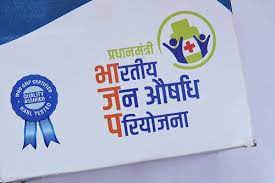
The Government of India has decided to allow 2000 Primary Agricultural Credit Societies (PACS) to open Pradhan Mantri Bhartiya Jan Aushadhi Kendras across the country.
- Pradhan Mantri Bhartiya Jan Aushadhi Kendras are set up under Pradhan Mantri Bhartiya Janaushadhi Pariyojana, which was launched by the Department of Pharmaceuticals, Ministry of Chemicals and Fertilizers in November 2008.
- Objective is to provide quality medicines at affordable prices for all, particularly the poor, to reduce out-of-pocket expenses in healthcare.
- These Jan Aushadhi Kendras provide generic drugs, which are available at lesser prices but are equivalent in quality and efficacy to expensive branded drugs.
- Jan Aushadhi stores also sell allied medical products commonly sold in chemist shops to improve the viability of running the Jan Aushadhi store.
- Pharmaceutical & Medical Devices Bureau of India (PMBI) has been established under the Department of Pharmaceuticals, Govt. of India, with the support of all the CPSUs for co-coordinating procurement, supply, and marketing of generic drugs through the PMBKs.
- The incentive amount of Rs.5 lakh will be provided to set up Pradhan Mantri Bhartiya Jan Aushadhi Kendra.
For All Humanity -The Future Of Outer Space Governance : United Nations New Policy

The United Nations (UN) has recently released a policy brief titled “For All Humanity — The Future of Outer Space Governance,” recommending the development of a new treaty to ensure peace, security, and the prevention of an arms race in outer space.
- The recommendations come ahead of the upcoming UN Summit of the Future, scheduled for September 2024, in New York.
- The summit aims to facilitate multilateral solutions and strengthen global governance to address future challenges.
Highlights:
- There has been an exponential increase in satellite launches over the past decade, driven by both government and private sector participation.
- In 2013, there were 210 new launches, which increased to 600 in 2019 and 1,200 in 2020 and 2,470 in 2022.
- Countries like the United States, China, India, and Japan are leading the way in space activities, including manned missions, lunar exploration, and resource exploitation.
- National Aeronautics and Space Administration (NASA) , through its Artemis mission, plans to land the first woman and the next man on the Moon.
- Minerals on the Moon (has rich deposits of helium 3, which is rare on Earth), asteroids (abundant deposits of valuable metals, including platinum, nickel and cobalt) and planets can be attractive for countries.
- There is an absence of an agreed international framework on space resource exploration, exploitation, and utilization.
- The brief underscores the importance of establishing mechanisms to support the implementation of space resource activities while addressing issues of jurisdiction, control, liability, and responsibility for environmental pollution.
- The current coordination of space traffic is fragmented, with different national and regional entities employing varying standards and practices.
- The lack of coordination poses challenges for countries with limited space capacity.
- The proliferation of space debris is identified as a significant issue, with thousands of objects posing threats to operational spacecraft.
- The UN calls for legal considerations related to jurisdiction, control, liability, and responsibility for environmental pollution caused by space debris. Technology to remove space junk is being developed, but the legal aspects require attention.
Recommendations:
- The UN recommends the negotiation and development of a new treaty to ensure peace, security, and the prevention of an arms race in outer space.
- This treaty would establish international norms, rules, and principles to address emerging threats and promote responsible space activities.
- Member states are urged to establish an effective framework for coordinating space situational awareness, space object maneuvers, and space events. This coordination will enhance the safety and security of space operations.
- The UN calls for the development of norms and principles for Space Debris removal, considering both legal and scientific aspects.
- An effective framework for sustainable exploration, exploitation, and utilization of space resources, particularly on the Moon and other celestial bodies, is recommended.
Prepaid Payment Instruments: RBI

A committee set up to review the Customer Service Standards in RBI Regulated Entities has recommended that the central bank should examine the extension of Deposit Insurance and Credit Guarantee Corporation (DICGC) cover to PPI.
- Prepaid Payment Instruments are instruments that facilitate the purchase of goods and services, conduct of financial services and enable remittance facilities, among others, against the money stored in them.
- PPIs can be issued as cards or wallets.
- There are two types of PPIs – small PPIs and full-KYC PPIs.
- mall PPIs are categorized as – PPIs up to Rs 10,000 (with cash loading facility) and PPIs up to Rs 10,000 (with no cash loading facility).
- PPIs can be loaded/reloaded by cash, debit to a bank account, or credit and debit cards.
- The cash loading of PPIs is limited to Rs 50,000 per month subject to the overall limit of the PPI.
- PPIs can be issued by banks and non-banks after obtaining approval from the RBI.
- Some of the approved PPI issuing banks are; Airtel Payments Bank, Axis Bank, Bank of Baroda, Jio Payments Bank, Kotak Mahindra Bank etc.
Tribal ‘Green Warrior’: Damodar Kashyap

Damodar Kashyap, a 74-year-old tribal farmer in Chhattisgarh’s Bastar district, has transformed 400 acres of land in his village into a flourishing forest through a community-based approach to conservation.
- As the village sarpanch, he implemented strict rules and fines for forest destruction and deployed villagers to patrol and guard the forest. Kashyap also utilized local beliefs and practices to emphasize the sacredness of the forest.
- He has received recognition for his conservation work, including the Paul K Feyerabend Foundation Award in 2014 and a chapter in the Class 9 social sciences textbook of the Chhattisgarh Board.
Cyclone Biporjoy:
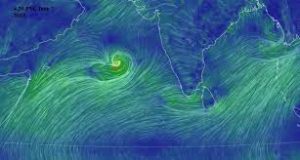
Cyclonic Storm “Biporjoy” intensifies in the Arabian Sea, posing significant risks and uncertainties for the affected regions.
- The India Meteorological Department (IMD) reports the storm’s rapid development, expecting it to strengthen into a severe cyclonic storm with winds reaching 115-125 kmph and gusts of 140 kmph on June 8, 2023.
- The name ‘Biparjoy’ meaning calamity or disaster was given by Bangladesh.
- The formation of Cyclone “Biporjoy” in June is unusual, and the increasing sea surface temperatures in the Arabian Sea, attributed to climate change, play a significant role. These higher temperatures, reaching 30-32 degrees Celsius, favour the intensification of cyclones.
- The cyclonic system also poses a threat to the southwest monsoon in India, hindering its arrival and progression.
- By diverting moisture away from India, the storm could further delay the monsoon onset.
- Climate scientists point out the potential influence of long-term Indian Ocean warming and the developing El Nino, both of which can weaken the monsoon.
The Ocean Census Initiative:

A new initiative called ‘The Ocean Census initiative’ aims to discover 100,000 new marine species within ten years, utilizing advanced technologies like high-resolution imagery, DNA sequencing, and machine learning.
- Scientists estimate that only about 10% of marine species have been formally described, leaving approximately 2 million species unidentified.
- The Ocean Census plans to conduct multiple expeditions to marine biodiversity hotspots, with the first expedition already underway in the Barents Sea.
- The initiative seeks to build upon previous efforts such as the Challenger Expeditions and the Census of Marine Life (between 2000 to 2010).
- It is jointly established by The Nippon Foundation ,a non-profit philanthropic organization in Japan and Nekton Foundation (marine science and conservation institute in the U.K) to discover unknown marine life
Kakhovka Dam:

A huge Soviet-era dam on the Dnipro River in southern Ukraine, known as the Kakhovka Dam, was breached, resulting in flooding across the war zone.
- The dam was an important part of the Kakhovka hydroelectric power plant, supplying water to the Crimean Peninsula and the Zaporizhzhia nuclear plant.
- Crimea is a peninsula in Eastern Europe, on the northern coast of the Black Sea, almost entirely surrounded by the Black Sea and the smaller Sea of Azov.
- It came under Russian rule in 2014.




